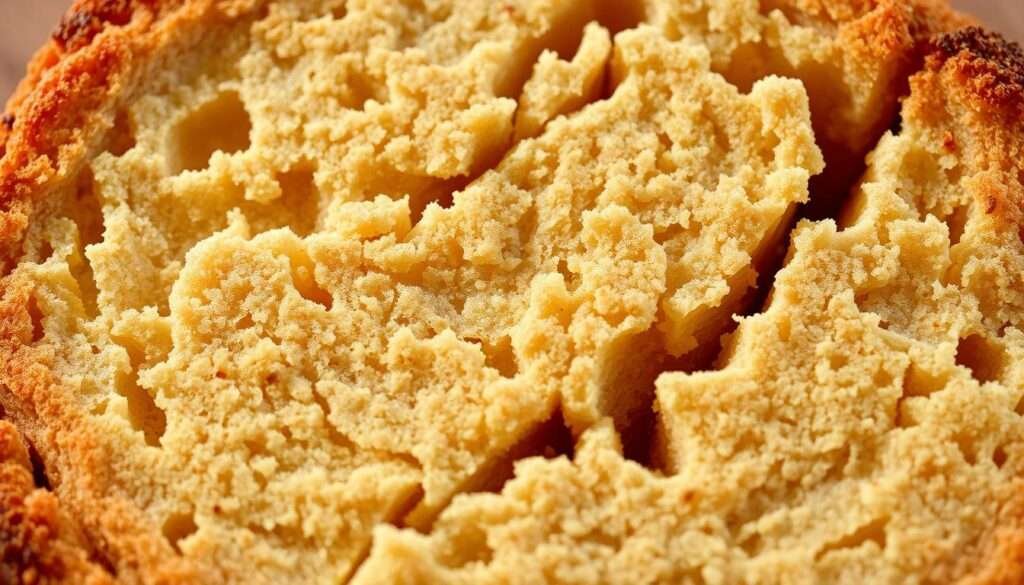There’s something undeniably special about a slice of warm banana bread. It’s more than just a quick snack or a simple dessert—it’s a way to brighten your day and bring comfort to your home. Today, I’m excited to share my personal favorite recipe that guarantees a moist and flavorful result every time.
The key to making exceptional banana bread starts with overripe bananas. These spotty, sweet fruits are packed with natural sugar, which enhances the flavor and texture of your loaf. By using the right combination of ingredients and proper mixing techniques, you can create a treat that’s both delicious and satisfying.
In this article, I’ll guide you through every step of the process. From essential ingredients to expert baking tips, I’ll ensure you have all the tools you need to make the perfect banana bread. Whether you’re a seasoned baker or just starting out, this comprehensive guide will help you achieve a loaf that’s bursting with flavor and moisture.
So, let’s get started on this baking journey together. Your perfect loaf of banana bread is just a few steps away!
Ingredients for the Ultimate Banana Bread
Creating the perfect banana bread begins with the right ingredients. Let’s explore what you’ll need to make a delicious and moist loaf.
Exact Ingredients List
- 2 cups of all-purpose flour
- 1 tsp baking soda
- 1/2 tsp salt
- 1 cup granulated sugar
- 1/2 cup unsalted butter, softened
- 2 large eggs
- 2 overripe bananas, mashed
- 1 tsp vanilla extract
- Optional: 1/2 cup chocolate chips or chopped walnuts
Pantry Staples for a Perfect Loaf
The key to a great texture is using room temperature ingredients. This ensures everything mixes smoothly. For added tenderness, consider substituting a tablespoon of butter with yogurt or sour cream.
Butter is preferred over margarine for its rich flavor, as suggested by experts. Each ingredient plays a crucial role: flour for structure, sugar for sweetness, and eggs for moisture. Even a pinch of salt enhances the flavor profile.
Optional mix-ins like chocolate chips or nuts let you customize the taste. These add a delightful surprise in each slice, making every bite unique.
With these simple yet essential ingredients, you’re ready to create a banana bread that’s both satisfying and flavorful. Let’s move on to the next steps to bring it all together.
Prepping and Mixing for Moist Banana Bread
Preparing the ingredients and mixing them properly are crucial steps in creating a deliciously moist banana bread. These initial steps set the foundation for the final texture and flavor of your loaf.
Mashing Overripe Bananas
The first step is to mash your overripe bananas. Use a fork or potato masher to break down 3-4 bananas until you get a smooth, creamy puree. This ensures even distribution of banana flavor throughout the bread and contributes to its moisture.
Combining Wet and Dry Ingredients
In a separate bowl, mix together the sugar, melted butter, eggs, and vanilla extract. In another bowl, whisk the dry ingredients (flour, baking soda, and salt). Gradually combine the dry ingredients with the wet mixture, stirring just until everything is incorporated. Avoid overmixing to keep the bread light and tender.
| Step | Action | Importance |
|---|---|---|
| 1 | Mash bananas until smooth | Ensures even flavor and moisture |
| 2 | Mix wet ingredients | Combines flavors and fats for richness |
| 3 | Whisk dry ingredients | Ensures even distribution of leavening agents |
| 4 | Combine mixtures gently | Prevents overmixing for a tender texture |
By following these steps, you’ll achieve a batter that’s well-balanced and full of flavor, leading to a moist and delicious banana bread.
Baking Techniques and Oven Tips
Baking is where the magic truly happens, transforming your batter into a golden, delicious loaf. To ensure your banana bread turns out perfectly, it’s essential to master your oven technique.
Setting the Right Oven Temperature
Preheating your oven to 350°F (175°C) is the first crucial step. This temperature ensures a steady rise and helps maintain moisture. I always recommend using an oven thermometer for accuracy, as oven temperatures can vary.
Determining the Perfect Baking Time
Baking time typically ranges from 50 to 60 minutes, but this can vary. Use a toothpick to test doneness; it should come out clean when inserted into the center. For precision, check the internal temperature, which should reach around 200°F.
Ambient room temperature and altitude can affect baking time. In warmer climates, the loaf might bake faster, while higher altitudes may require a slightly longer time. I’ve found that keeping an eye on the loaf after 45 minutes helps prevent burning.
Experience has taught me that every oven is different. Adjustments might be necessary based on your oven’s performance. A golden-brown crust and a clean toothpick are sure signs of perfection. Patience is key to achieving that moist, flavorful loaf.
Personal Touches: Nuts, Chocolate Chips, and Flavor Enhancers
Adding personal touches to your banana bread can elevate it from a simple treat to a signature delight. Whether you prefer a bit of crunch or an extra burst of flavor, these enhancements will make your loaf truly special.
Adding Optional Mix-ins
One of the joys of baking is the ability to customize your creations. For banana bread, I recommend experimenting with the following mix-ins:
- Chopped walnuts or pecans for a satisfying crunch and nutty flavor.
- Chocolate chips for a sweet surprise in each bite.
- A sprinkle of cinnamon to add warmth and depth.
- An extra dash of vanilla extract for enhanced sweetness.
These mix-ins should be gently folded into the batter after it’s mixed to maintain the bread’s tender texture. Start with a half-cup of your chosen mix-ins and adjust to your liking for the perfect balance of flavors.

By incorporating these personal touches, you can transform a classic banana bread recipe into a gourmet experience that reflects your unique taste. Each addition not only enhances the flavor but also adds a delightful textural element, making every slice a pleasure to enjoy.
Best Practices for Ensuring Moistness and Flavor
Mastering the techniques to maintain moisture and enhance flavor in your banana bread is key to creating a truly exceptional loaf. These practices, honed through years of baking, will guide you toward a softer, more flavorful result.
Avoiding Overmixing
Overmixing is a common mistake that can ruin the texture of your bread. When you mix batter too much, the gluten in the flour becomes overactive, leading to a dense loaf. To avoid this, mix your wet and dry ingredients separately and gently fold them together until just combined. Stop as soon as you see everything come together in a cohesive batter. This gentle approach ensures the bread stays light and tender.
Using Room Temperature Ingredients
Room temperature ingredients are essential for a smooth, even batter. Eggs and butter at room temperature mix more easily, creating a homogeneous texture that supports the rise and moisture of the bread. Cold ingredients can result in a lumpy batter and a less even texture. Always take your eggs and butter out of the fridge about 30 minutes before you start mixing.
- Mix wet and dry ingredients separately to preserve texture.
- Gently fold ingredients together until just combined.
- Use room temperature eggs and butter for a smoother batter.
- Monitor mixing to avoid overworking the batter.
Proper cooling is also crucial. Let your bread cool in the pan for 10 minutes before transferring it to a wire rack. This step helps retain moisture and ensures the loaf sets properly without becoming soggy. By following these practices, you’ll achieve a banana bread that’s both flavorful and moist, with a texture that keeps everyone coming back for more.
Banana Bread Bliss: The Moist Recipe You’ll Love
Discover why this banana bread recipe stands out from the rest. It’s all about achieving the perfect rise and maintaining a tender texture, which I’ve mastered through careful technique and a few simple tips.
Achieving an Optimal Rise
The secret to a light and airy loaf lies in the balance of leavening agents. I ensure that the ratio of baking soda to flour is just right, which helps the bread rise evenly. Proper preheating of the oven to 350°F is crucial—using an oven thermometer guarantees accuracy. This precise temperature control prevents the bread from rising too quickly or too slowly, ensuring a golden crust and a tender crumb.
Maintaining the Perfect Texture
Maintaining the perfect texture starts with the mixing process. Overmixing can lead to a dense loaf, so I mix wet and dry ingredients separately and fold them gently. Using room-temperature butter and eggs ensures a smooth batter. After baking, I let the bread cool in the pan for 10 minutes before transferring it to a wire rack. This step is vital for retaining moisture and allowing the loaf to set properly without becoming soggy.

When checking for doneness, I use a toothpick to ensure it comes out clean. For added precision, I sometimes use an oven thermometer to check the internal temperature, which should be around 200°F. These steps guarantee a loaf that’s both moist and flavorful.
The careful balance of ingredients and precise mixing techniques yield a bread that’s light and airy. Each slice retains its moisture and texture, making it a delight to serve. This method ensures a banana bread that’s truly exceptional, perfect for any time of day.
Serving Suggestions and Creative Twists
Now that your banana bread is ready, it’s time to think about how to serve it. Whether you’re enjoying it as a breakfast treat, an afternoon snack, or even dessert, there are countless ways to elevate this classic bread.
Complementary Beverages and Spreads
A warm slice of banana bread pairs perfectly with a cup of coffee or tea. For a more indulgent treat, try spreading a layer of salted butter or cream cheese on your slice. If you’re looking for something sweeter, a drizzle of honey or maple syrup adds a delightful touch. Nut butters like peanut butter or almond butter also make a tasty and protein-rich addition.
Creative Presentation Ideas
To make your banana bread stand out, consider these creative presentation ideas. Slice the loaf diagonally for a more appealing look, or top each slice with fresh berries or a sprinkle of cinnamon. For a dessert twist, serve your banana bread with a scoop of vanilla ice cream or a dollop of whipped cream. If you want to enjoy it on-the-go, toast a slice and pack it with your favorite spread for a quick snack.
Remember, the key to serving banana bread is to have fun and experiment with different combinations. Whether you’re keeping it simple or getting creative, every slice is an opportunity to make your taste buds smile. So go ahead, get creative, and enjoy every delicious moment!
Final Reflections on Your Banana Bread Journey
Reflecting on my journey with this banana bread, I’ve found it to be a delightful adventure. From the initial steps of mashing overripe bananas to the final loaf, each part of the process contributes to a delicious outcome. The key to success lies in precise techniques like gentle mixing and proper oven temperature, ensuring a perfect rise and texture.
For storage, keep your loaf in an airtight container at room temperature to maintain freshness. I encourage you to experiment with mix-ins and serving ideas to make the recipe your own. Share your experiences and variations—your creativity makes this recipe a shared joy. This banana bread is more than a treat; it’s a labor of love that brings warmth and comfort to any day.
